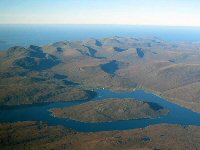
Figure 4: The smaller hills of Harris (aerial photograph taken by Alan Moar: published with kind permission)
1 Environmental and Research Background | 2 Post-medieval Buildings | 3 Earlier Vernacular Buildings | 4 Conclusions and Discussion
The Western Isles (Figs 4 and 5) are an island chain formed almost entirely of Pre-Cambrian basement rocks, known collectively as Lewisian, and one of the oldest rocks in Europe at around 2900 million years (Smith and Fettes 1979; Fettes et al. 1992). These are mostly gneiss, although extensive bands of granite occur in south-west Lewis and Harris (Collins 2003, 12). Both of these are difficult to work with for building (Armit 1996, 22), but there are small areas in Lewis where more laminated meta-sedimentary gneiss and sandstone can be found (Harding and Gilmour 2000, 1).

Figure 4: The smaller hills of Harris (aerial photograph taken by Alan Moar: published with kind permission)

Figure 5: An aerial photograph of Southern Lewis (aerial photograph taken by Alan Moar: published with kind permission)
The partner to geology in the production of the prehistoric and modern environment is the climate – long a source of particular comment in guidebooks and excavation reports of the Outer Hebrides. Nowadays the islands have a deserved reputation for a dynamic and essentially maritime climate, dominated by wind and a high likelihood of rain. Indeed, the weather station at the Butt of Lewis is the most storm-prone in the UK (Barber 2003, 19), a situation further exacerbated by the lack of tree cover.
Climatic and geological factors have influenced vernacular buildings in terms of their positioning and their design throughout past millennia. These tendencies have disappeared in the last century as locals have adopted generic designs from the mainland and planners have ignored tradition. An early example of this was the rebuilding of the St Kilda village from 1861, when the traditional aerodynamic houses, positioned end-on to the prevailing winds from the bay, were replaced by standard mainland rectangular cottages built of imported material and facing the sea (Stell and Harman 1988, 19).
© Internet Archaeology/Author(s)
University of York legal statements | Terms and Conditions
| File last updated: Tues Feb 28 2006